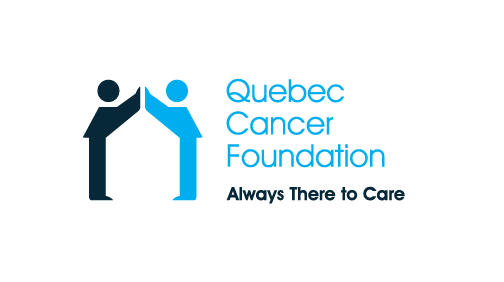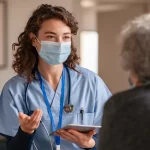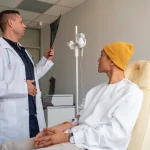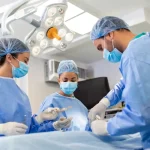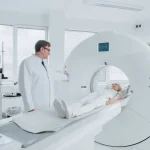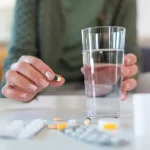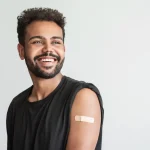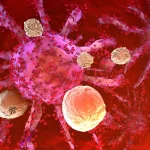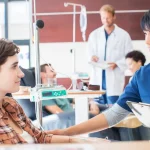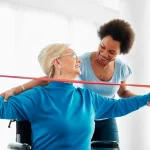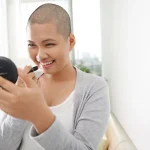Lymphedema
Lymphedema is a swelling caused by an abnormal accumulation of fluid in the subcutaneous tissue.
There are two types of lymphedema: primary lymphedema, which may be present at birth or develop later, and secondary lymphedema, which is caused by damage to the lymphatic system due to trauma, surgery or radiation having affected the lymph nodes or vessels. (Source: Lymphedema Association of Quebec)
Signs and symptoms
- Swelling, sudden or gradual, noticeable by the indentation left by pressing the skin or by tight clothing or jewelry.
- Feel of heaviness, tightness.
- Pain, throbbing or tenderness.
- Swelling increases in hot, humid weather, or after exercise.
You need to be on the lookout for symptoms and see a doctor or a specialized lymphedema therapist upon the onset of symptoms, since early treatment helps minimize swelling and reduce complications. Request immediate medical treatment if the following signs appear (cellulitis):
- Spreading redness or rash, accompanied by itching;
- Increased swelling;
- An increase in skin temperature;
- A sudden fever and chills.
Preventing lymphedema after a dissection
For those who have had a lymph node dissection (removal of nodes from the armpit) following breast surgery, steps need to be taken to resist infection and to facilitate circulation, since their defense system on the operated side has been modified. In addition, the skin in the operated area is more sensitive, which is why extra care needs to be taken.
IMPORTANT: These precautions do not apply to those who have only had a sentinel node biopsy.
Helpful hints
- Protect your skin and devote meticulous attention to reducing the risk of infection (cellulitis).
- Cleanse the skin thoroughly with mild soap, dry well and apply a moisturizer.
- Be very careful to avoid cuts, scrapes, splinters and stings. Use an electric razor to avoid cuts and skin irritation.
- If cut or scratched, clean the wound with soap, apply a disinfectant and, if necessary, an antibiotic ointment.
- Protect skin with sunscreen with a high sunburn protection factor and with mosquito repellent to avoid bites and insect bites.
- Exercise regularly to reactivate blood flow in the operated arm.
- Avoid moving or carrying very heavy objects with the operated arm, and until functional recovery of the arm.
- Make sure not to have any tight sleeves, jewelry or bracelets on the operated side.
- Avoid lying on your arm on the operated side if it tends to swell or is painful.
- Inform the medical team if there is any swelling, itching, or skin discolouration in the operated area or swelling of the arm and hand.
- Avoid, if possible, taking your blood pressure on the arm on the operated side.
- Do not hesitate to use your arms, even if there is numbness in the arm on the operated side, since this is a normal phenomenon that gradually recedes.
- Avoid, if possible, any blood tests or injections on the operated side, except in cases of extreme emergency. In addition, no vaccine should be administered to the operated arm.
- Allow your nails to grow on the side of the operated arm; do not cut the cuticles. Avoid injury during the manicure.
- Wear rubber gloves when washing in hot water, performing yard work or using steel wool.
- Eating a balanced diet and maintaining an average body weight.
- Avoid extremes in temperature, such as intense cold or long exposure to high heat (e.g. hot tubs and saunas).
Additional precautions when traveling by air
- Wearing a compression garment to prevent or limit swelling due to drop in atmospheric pressure.
- Consult a qualified therapist before a flight.
- Move the affected limb often during the trip flight keep the lymph fluid moving.
- Drink enough water before and during the flight to avoid dehydration.
Please click on the following links for more information:
Le lymphœdème, c’est possible de le prévenir et de le traiter (in French only)
(Sources : www.infolympho.ca and www.centredesmaladiesdusein.ca/fileadmin/cha/Microsite/CMS/traitements1.pdf)
Exercise
To prevent lymphedema or improve fitness, the kinesiologists at the Quebec Cancer Foundation offer a personalized program that includes specific exercises, such as crunches, rotations and exercises with weights, to those affected by cancer . Call the nearest Regional Center to make an appointment with a professional.
Régie de l’assurance maladie du Québec Assistance Program
A multilayer repayment program for bandages and compression garments used to treat lymphedema has been available since January 1, 2014. This program contributes toward improving access to treatment, since lymphedema is still not covered under the public insurance plan. For details, visit Portal santé mieux-être du government du Québec.
For more information, visit the website of our partner the Lymphedema Association of Quebec.
